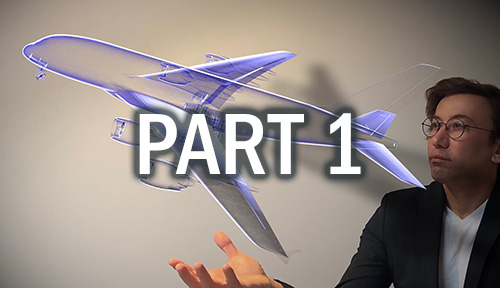Design simulation is a type of computer-aided engineering used to create new products, reducing the need for physical prototypes. The result is a faster, more efficient design process in which complex physics and math do much of the heavy lifting.
Rapid advances in CPUs and GPUs that are used to perform simulation and software have made it possible to shift product design from the physical world to a virtual one.
In this virtual space, engineers can create and test new designs as quickly as their servers can calculate the results and then render them with visualization software.
Getting better all the time
Designing via AI-powered virtual simulation offers significant improvements over older methods.
Back in the day, it might have taken a small army of automotive engineers years to produce a single new model. Prototypes were often sculpted from clay and carted into a wind tunnel to test aerodynamics.
Each new model went through a seemingly endless series of time-consuming physical simulations. The feedback from those tests would literally send designers back to the drawing board.
It was an arduous and expensive process. And the resources necessary to accomplish these feats of engineering often came at the expense of competition. Companies whose pockets weren’t deep enough might fail to keep up.
Fast-forward to the present. Now, we’ve got smaller design teams aided by increasingly powerful clusters of high-performance systems.
These engineers can tweak a car’s crumple zone in the morning … run the new version through a virtual crash test while eating lunch … and send revised instructions to the design team before day’s end.
Changing designs, saving lives
Faster access to this year’s Ford Mustang is one thing. But if you really want to know how design simulation is changing the world, talk to someone whose life was saved by a mechanical heart valve.
Using the latest tech, designers can simulate new prosthetics in relation to the physiology they’ll inhabit. Many factors come into play here, including size, shape, materials, fluid dynamics, failure models and structural integrity over time.
What’s more, it’s far better to theorize how a part will interact with the human body before the doctor installs it. Simulations can warn medical pros about potential infections, rejections and physical mismatches. AI can play a big part in these types of simulations and manufacturing.
Sure, perfection may be unattainable. But the closer doctors get to a perfect match between a prosthetic and its host body, the better the patient will fair after the procedure.
Making the business case
Every business wants to cut costs, increase efficiency and get an edge over the competition. Here, too, design simulation offers a variety of ways to achieve those lofty goals.
As mentioned above, simulation can drastically reduce the need for expensive physical prototypes. Creating and testing a new airplane design virtually means not having to come within 100 miles of a runway until the first physical prototype is ready to take flight.
Aerospace and automotive industries rely heavily on both the structural integrity of an assembly but also on computational fluid dynamics. In this way, simulation can potentially save an aerospace company billions of dollars over the long run.
What’s more, virtual airplanes don’t crash. They can’t be struck by lightning. And in a virtual passenger jet, test pilots don’t need to worry about their safety.
By the time a new aircraft design rolls onto the tarmac, it’s already been proven air-worthy—at least to the extent that a virtual simulation can make those kinds of guarantees.
Greater efficiency
Simulation makes every aspect of design more efficient. For instance, iteration, a vital element of the design process, becomes infinitely more manageable in a simulated environment.
Want to find out how a convertible top will affect your new supercar’s 0-to-60 time? Simulation allows engineers to quickly replace the hard-top with some virtual canvas and then create a virtual drag race against the original model.
Simulation can take a product to the manufacturing phase, too. Once a design is finished, engineers can simulate its journey through a factory environment.
This virtual factory, or digital twin, can help determine how long it will take to build a product and how it will react to various materials and environmental conditions. It can even determine how many moves a robot arm will need to make and when human intervention might become necessary. This process helps engineers optmize the manufacturing process.
In countless ways, simulation has never been more real.
In Part 2 of this 2-part blog, we’ll explore the digital technology behind design simulation. This cutting-edge technology is made possible by the latest silicon, vast swaths of high-speed storage, and sophisticated blade servers that bring it all together.
Do more:



